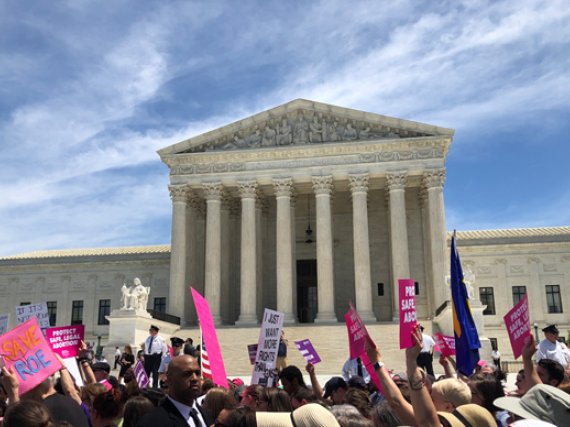Expanding Reproductive Health Access Through State Policy
The COVID-19 global pandemic has drastically changed the way people access reproductive health care. There have always been obstacles to accessing birth control—financial barriers, lack of insurance, and difficulty visiting a clinic for example. Now, with stay-at-home orders, closure of university health centers, shifting priorities and limited access at other clinics, and concerns about exposure to the virus, getting to a clinic for birth control is even harder. As quarantine orders and social distancing guidelines continue, many people are left wondering how to access safe and convenient health care.
Some states have passed (or are currently working to pass) policies to protect and extend access to reproductive health. To better understand what states are taking a lead in this area we chart three policies on a state-by-state basis: extended supply of contraception, pharmacist prescribing of contraception, and protecting contraceptive coverage.
While none of these policies by themselves is a panacea, these policies together will lead to greater control over reproductive health for all even beyond the current pandemic as each has the potential to make birth control access easier, safer, and more convenient.
How do these policies help?
Extended Supply of Contraceptives
Insurance plans have typically covered 30- to 90-day supplies of prescription contraceptives at one time. Limiting the supply of prescription contraceptives to these short intervals reduces timely access to contraception and can create gaps in use. Removing this barrier by allowing extended supply of contraception can reduce unplanned pregnancies that result from a delay in accessing contraception.
Pharmacist Prescribing of Contraception
Over the last few years there has been a growing interest in expanding the authority of pharmacists to directly prescribe and dispense self-administered hormonal birth control methods (e.g., the pill, patch, ring, and shot). This eliminates the need for patients to first get a prescription from a doctor before going to have it filled at a pharmacy.
Protecting Contraceptive Coverage
Because of the Affordable Care Act all non-grandfathered insurance plans are required to cover at least one contraceptive for each of the 18 FDA approved methods without copays or deductibles and require that plans reduce administrative barriers for patients. Over the last few years proposed changes to weaken the ACA, and legal challenges to the ACA itself, have created uncertainty about the future of the law and the protections it provides. In this challenging landscape, some state legislatures have taken action to codify and/or expand upon the federal provision to serve the needs of their states.
Which states have passed all three policies?
Currently seven states have passed all three policies; Washington, Oregon, California, New Mexico, New Hampshire, Maryland, and DC. Illinois, New Jersey, and Rhode Island have pending legislation that, if passed, would add them to the list of states that have passed all three policies.
Thanks in part to the passage of these policies, people in these states have more options to get the birth control that they need in an amount or manner that works best for them. In California for example, people living in Glenn, Lassen, Calaveras, Mariposa, and Alpine counties have no health centers offering the full range of methods. Having the ability to receive a 12-month supply of contraception means that they need only travel to their nearest health center or doctor once a year to get a birth control prescription. Extending the supply of contraception and protecting birth control coverage also help the 2.6 million women living in other counties in California who live in contraceptive deserts, or counties in which there is inadequate access to the full of methods.
What are other states doing?
While we believe that passing all three of these policies at a state level can help move the needle for people living in the US, many other states are also doing good work. In four states, Colorado, Hawaii, West Virginia, and Virginia, the state legislature has passed legislation around the two of these policies, extended supply of contraceptives and pharmacist prescribing of contraception. In these states lawmakers understand how critical these policies are to helping people receive the vital preventative care services they deserve, including contraceptive care. By removing barriers, they have helped to ensure that more women have the power to decide their reproductive future, which is even more important in the face of the COVID-19 pandemic.
We are very pleased to see the efforts being undertaken by more than half of the states in the country to expand access to birth control in some manner. But a person’s zip code should not define their ability to access high-quality health care and their bank account should not limit their ability to afford the contraceptive method that they desire.
Despite the work being done on each of these policies fronts, more than 19 million women still face significant barriers to care and in receiving birth control. Further, an estimated 10.8 million women of reproductive age in the US still have no form of health insurance, and consequently some of them rely on already-strapped safety net programs or lack access to no- or low-cost contraception entirely.
We believe that all contraceptive methods should be easily accessible and affordable. We believe that everyone deserves the power to decide if, when, and under what circumstances to get pregnant and have a child.



